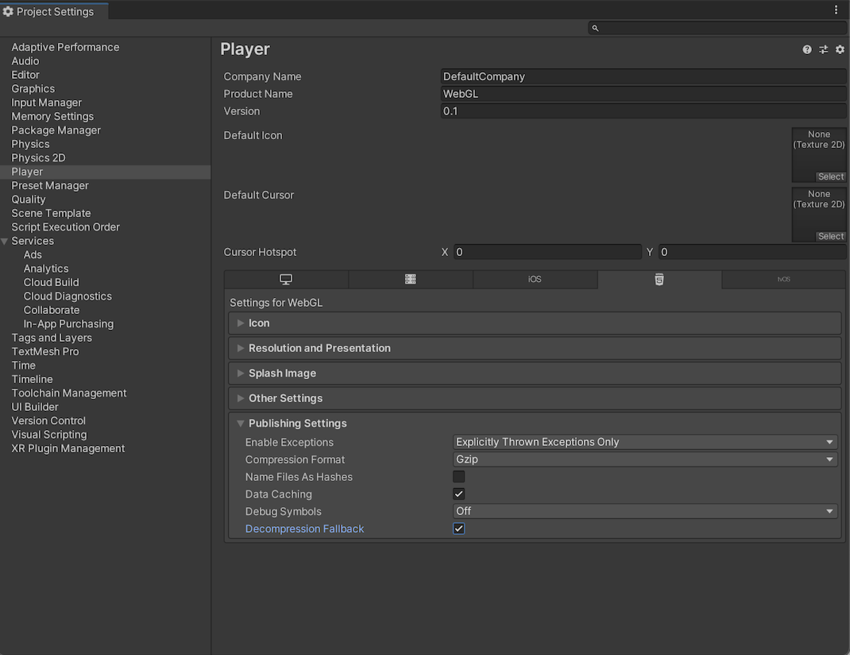Embedding Guide
Since Ludum Dare 51, we now support uploading and embedding on game pages.
Uploading to Ludum Dare is not required, but some features (embedding) are only supported if you upload.
Downloads
We support many common file formats. If you’re not sure what to use, we recommend zip. Files are uploaded from your game page. Simply edit them (click the pencil icon the bottom corner), scrolling to the “Downloads” section, and click the upload button.
Details
- Supported file extension(s):
- Archive:
zip,tar.gz,tar.bz2,7z,rar - Microsoft:
msi,exe,com - Apple:
dmg,ipa - Linux:
flatpak,snap,appimage,deb,rpm,pkg,apk(Android) - Document:
pdf,epub,txt - Legacy:
jar,swf
- Archive:
- Max file size: 256 MB
IMPORTANT: Embedded games have different restrictions. See below for details.
GitHub discussion for additional formats: https://github.com/JammerCore/JammerCore/discussions/2171
Embedding
You can embed web games directly on a game pages. We support HTML5 games
To upload, you must prepare a zip file with all of your files, and an index.html file in the root (top-level folder). Your zip file can be uploaded via the upload button in the Embedding section.
IMPORTANT: Web games run in a strict sandbox! See the JavaScript Restrictions section below.
Details
- Supported file extension(s):
- Archives:
zip
- Archives:
- Max file size: 256 MB
File structure
index.htmlin the root directory of the ZIP file- (TODO: Allow users to change this)
Layout Restrictions
- 948x533 pixel resolution (16:9)
- (TODO: Allow users to change this)
JavaScript Restrictions
- no external requests (
fetch,XMLHttpRequest) - no storage or cookies (
localStorage,sessionStorage,indexDB)
Supported JavaScript features
Our embeds are a standard <iframe>. You should be able to use any feature supported by modern browsers (other than those mentioned above). Features that require non-standard configurations or permissions are listed below.
requestFullScreen()- Performance features, via cross-origin isolation (
SharedArrayBuffer, high resolution timers) - WebAssembly Content-Type (
application/wasm) - Unity Content-Encoding formats (
gzip,br)
GitHub discussion on additional browser features: https://github.com/JammerCore/JammerCore/discussions/2172
Mobile
We’ve been focused on the desktop experience, and though it should still work, the mobile web-game experience might be sub-par.
GitHub issue: https://github.com/JammerCore/JammerCore/issues/2169
Persistent storage
At the time of this writing, embedded games don’t support persistent storage. We are exploring some options, but to keep things secure we will not be enabling access to a traditional storage method.
GitHub issue: https://github.com/JammerCore/JammerCore/issues/2170
Accessing external data
For privacy and security reasons, we will not be allowing access to external websites or data. If your game requires external data, we recommend hosting it yourself and linking it.
Embedding embedded Ludum Dare games on other websites
At the time of this writing this is unsupported. If there’s enough interest, we may add this.
GitHub discussion: https://github.com/JammerCore/JammerCore/discussions/2173
Exporters
Unity

Unity’s WebGL exporter should work as soon as you do the following.
- Disable Data Caching (requires IndexedDB)
We support Brotli (best) and Gzip compression. (MDN, CanIUse)
More information: https://docs.unity3d.com/Manual/webgl-deploying.html
Godot
Mike has been digging into Godot’s sources. The recently added PWA feature (Progressive Web App) seems to be the root of the problem.

Unfortunately disabling PWA doesn’t solve it, as the service worker code PWA relies on is always called. We’ll see about getting this fixed in Godot.
For now, you can workaround this by opening up the .js file generated by Godot, and making a few small changes. You should find ~3 references a test for 'serviceWorker' in navigator. Replace that entire expression with false.
Be aware: the file will be minimized, so you will find these expressions in unusual parts of the file, with whitespace removed. I recommend searching for the string in navigator, and manually replacing the entire 'serviceWorker' in navigator expression.
// Before
if ('serviceWorker'in navigator)
if (me.config.serviceWorker && 'serviceWorker'in navigator)
if ('serviceWorker'in navigator && GodotPWA.hasUpdate)
// After
if (false)
if (me.config.serviceWorker && false)
if (false && GodotPWA.hasUpdate)
'serviceWorker' in navigator is a check to see if service workers are available in your browser. Unfortunately the way browser sandboxing works is that even if these features exist, they fail when used. The fix above works because Godot doesn’t actually need service workers, but it uses them if it finds them.
libGDX
We’re not sure what’s exactly wrong, but I suspect it’s similar to what we’re seeing by sandboxing Godot (features the developers never expect are being denied).
html.nocache.js makes reference to document.compatMode and dies. I don’t see why this is considered a threat to the sandbox, but whatever. This variable tends to contain the value "CSS1Compat". Replacing document.compatMode with the value should get you closer to running, but we don’t yet know what else needs to be changed.
Troubleshooting
“Uncaught DOMException: Failed to execute ‘texImage2D’ on ‘WebGLRenderingContext’: The cross-origin image at …” or “Uncaught DOMException: The operation is insecure.”
Problem: texImage2D doesn’t have permission to read image resources.
Solution: Get permission to read by setting crossOrigin on your Image’s request. Passing an empty string or 'anonymous' to crossOrigin makes it an anonymous CORS request (MDN).
const gl = document.createElement("canvas").getContext("webgl");
const tex = gl.createTexture();
gl.bindTexture(gl.TEXTURE_2D, tex);
loadImage('asset/player1.png');
function loadImage(url) {
const img = new Image();
img.onload = () => {
// load the texture into VRAM. this fails if you don't have permission to access the response
gl.texImage2D(gl.TEXTURE_2D, 0, gl.RGBA, gl.RGBA, gl.UNSIGNED_BYTE, img);
};
img.crossOrigin = ''; // ask for (anonymous) permission to access the response
img.src = url; // triggers the request (setter)
}
Because of the img.crossOrigin = '' line, the request for asset/player1.png includes an Origin: null HTTP header. Our server responds with an Access-Control-Allow-Origin: * HTTP header, which is how the browser knows you have permission to read it.
More details: https://stackoverflow.com/a/46461959